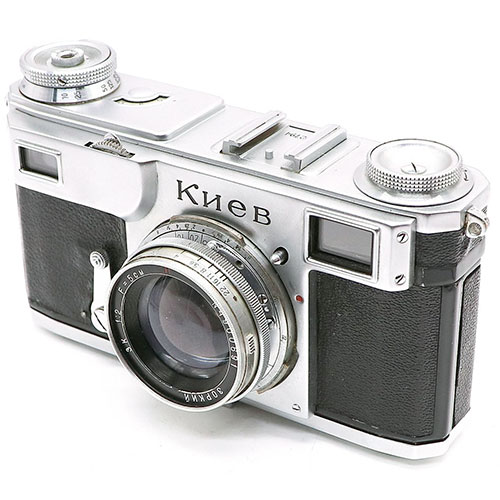Kiev Rangefinder Cameras
Kiev rangefinder cameras are excellent representatives of Soviet photographic equipment that deserve special attention and respect. Kiev cameras were produced at the Arsenal plant in the city of Kiev, Ukrainian SSR and became one of the most popular and recognized cameras of their time.
Kiev rangefinder cameras were distinguished by excellent build quality, durability and reliability. Thanks to their optical rangefinder, Kiev cameras allowed precise focusing on the subject, which made them ideal for portrait and journalistic photography.
Kiev rangefinder cameras had a wide range of lenses, which made it possible to choose the best option for various types of shooting. One of the most popular lenses was Jupiter-8, which provided high image quality and was very compact.
History of Kiev Rangefinder Cameras
The history of the appearance of Kiev cameras in the USSR is connected with the transfer of the Zeiss Ikon plant from Dresden to the city of Kiev after World War II. Some of the equipment and technology were transferred to the USSR as part of reparations, and on their basis the Arsenal plant was created in Kiev.
The first Kyiv cameras were created on the basis of Zeiss Contax models, and were practically no different from the original German rangefinder cameras. Although over time the Arsenal plant began to add distinctive features to its cameras, they remained virtually unchanged until the end of production in the late 80s.
Distinctive Features of Kiev Rangefinders
Unlike other rangefinder cameras that were produced in the USSR, Keiv cameras had a noticeably higher build quality.
The cameras in this series had all the necessary characteristics to become the most popular tool for professional photographers in the USSR.
This series of cameras had an original and very convenient mount, the largest rangefinder base, an excellent set of lenses, a shutter with metal curtains and speeds from 1/2 sec to 1/1000 sec.
In addition, these cameras were essentially not clones of German prototypes, but the most original German rangefinders, which were produced on the territory of the USSR.


